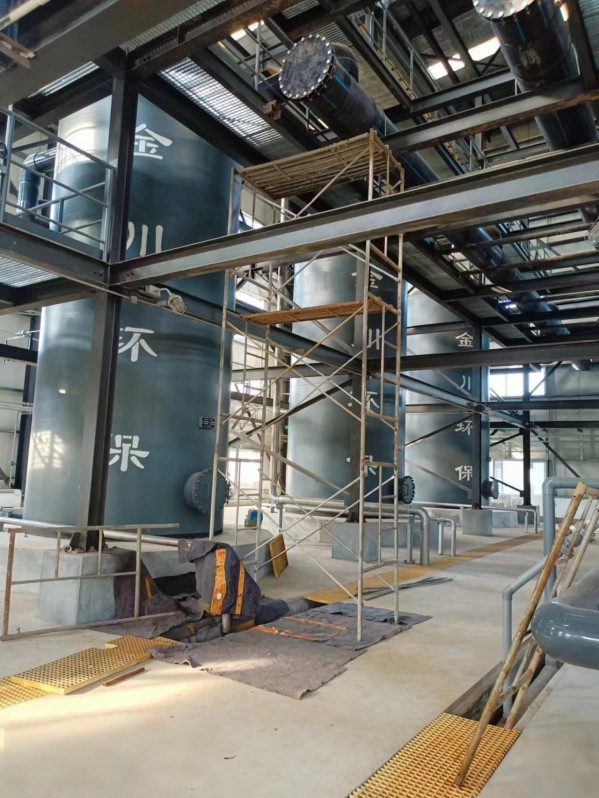
OC Ratio in Fenton Process
In the Fenton reaction, the relationship between hydrogen peroxide (H₂O₂) consumption and COD removal rate is typically measured by the 'OC ratio' or 'H₂O₂/COD dosage ratio'.
Its calculation is divided into two levels: theoretical stoichiometric ratio and actual operating dosage ratio.
1. Theoretical stoichiometric ratio calculation
This calculation, based on the chemical equation of the Fenton reaction, theoretically determines how many parts of H₂O₂ are required to fully oxidize one part of COD.
The core reaction equation is as follows:
H₂O₂ + Fe²⁺ → Fe³⁺ + OH⁻ + ·OH
(Hydroxyl radical · OH is the actual oxidant)
·OH oxidation of organic compounds (represented by carbon C) simplified reaction:
C (organic matter) + ·OH →... → CO₂ + H₂O
Combining the above processes and considering electron transfer, a simplified total reaction can be obtained:
2H₂O₂ + C (organic compound) → 2H₂O + CO₂
The overall reaction equation shows that, theoretically, 1 mole of carbon (equivalent to 12g COD) requires 2 moles of H₂O₂ for complete oxidation.
Now performing a Moore mass conversion:
The molar mass of H₂O₂ is 34 g/mol
The molar mass of COD (calculated as O₂) equals 32 g/mol, as COD is defined by the amount of oxygen consumed.
Theory vs. Calculation:
(2 mol H₂O₂ × 34 g/mol) / (1 mol C × 32 g/mol) / COD = 68 / 32 ≈ 2.125 g H₂O₂ / g COD
Conclusion: From a purely stoichiometric perspective, the theoretical oxygen consumption ratio (OC ratio) is approximately 2.13. This indicates that to remove 1 gram of COD, at least 2.13 grams of 100% concentration hydrogen peroxide (H₂O₂) are theoretically required.
2. Calculation of actual operating dosage ratio
In actual wastewater treatment projects, the utilization rate of H₂O₂ is far below 100% due to the ineffective decomposition and competitive reactions mentioned earlier. Therefore, the actual dosage is much higher than the theoretical value.
The calculation formula is as follows:
Actual OC ratio (g H₂O₂/g COD) = [mass of H₂O₂ consumed] / [mass of COD removed]
Step breakdown:
Calculate the actual mass of H₂O₂ consumed:
It is usually calculated by adding concentration and volume of wastewater.
H₂O₂ consumption (g/m³ or mg/L) = H₂O₂ dosage concentration (mg/L)
Calculate the actual removed COD mass:
COD removal (g/m³ or mg/L) = Inlet COD concentration (mg/L) -Outlet COD concentration (mg/L)
Calculate the actual OC ratio:
Actual OC ratio = H₂O₂ consumption (mg/L) / COD removal (mg/L)
illustrate :
A wastewater treatment system with an influent COD of 500 mg/L and an effluent COD of 100 mg/L.
The COD removal rate is 400 mg/L (500-100).
To achieve this removal effect, hydrogen peroxide (H₂O₂) with a concentration of 1200 mg/L (calculated based on 100% purity) was actually added.
Thus, the actual OC ratio is 1200 mg/L divided by 400 mg/L, resulting in 3.0 g H₂O₂ per gram of COD.
Key points and influencing factors
The gap between theory and practice: In the above example, the actual OC ratio (3.0) is larger than the theoretical value (2.13), which is very common. The reasons include:
Invalid decomposition: H₂O₂ decomposes spontaneously in the absence of pollutants.
Free radical quenching: ·OH radicals are neutralized by impurities such as carbonate (CO₃²⁻) and chloride (Cl⁻) in water.
Non-selective oxidation: ·OH oxidizes all oxidizable substances indiscriminately, not just the target COD.

The significance of OC:
Assessment efficiency: The lower the OC ratio, the higher the utilization rate of H₂O₂ and the more economical and efficient the process.
Process optimization: Determining the optimal organic carbon (OC) ratio for specific wastewater through pilot-scale experiments is a critical step in the design and operation of the Fenton process. The engineers aim to minimize the actual OC ratio while maintaining treatment efficiency.
Jinchuan's magnetic Fenton process changes the paramagnetism of water molecules, making it easier for hydroxyl radicals to attack COD molecules, thereby greatly reducing the consumption of hydrogen peroxide and bringing the OC ratio closer to the ideal value
